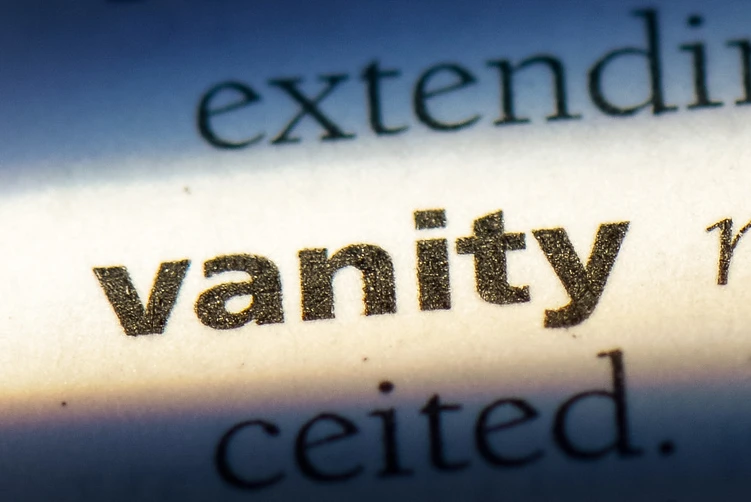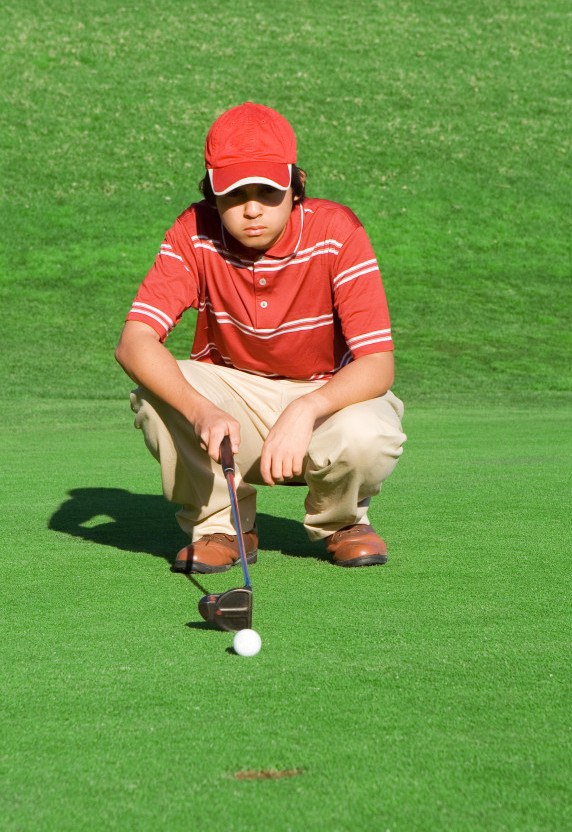When I was young and starting playing golf, I didn’t really think about handicap. In fact, I am not even sure if that meant anything to me at all. I took a few lessons from the local pro with the other kids. I watched Seve, Faldo and the rest on TV. I didn’t play in competitions and had no real aims of making it to the top of the game. After a 20 twenty year break, handicap was a thing almost immediately and the idea of the mythical beasts that are plus handicap golfers entered my consciousness.
The Range of Golf Handicaps
Before reaching for the giddy heights of the plus handicapper, we should probably start near to the bottom. This is going to vary country to country. My most recent handicap is a French one, so let’s talk about that because it works in a very similar way to most countries, especially since the creation of the world handicap system. I have been through the way handicaps actually work in detail here, so feel free to have a look back through that if you want.
The basics mean that a player starting out will be given a handicap. Here, it is 54. The first competition I played (over 9 holes) I had this 54 handicap. As I progressively improved, shots were taken off this handicap. The calculation was a little bit different, but the result was essentially the same as today where the best 8 out of the last 20 rounds are averaged out.
Initially, everyone tends to shoot down at a rate of knots. Personally, I had played golf a fair bit as a young teen and so I wasn’t a true beginner when I re-started a dozen years ago. I perhaps had the sort of game that a 25 or so handicapper might have.
The result was that I got down to the mid-twenties in not much time and then continued to come down over the next few years until I reached my low point of mid single figures a few years ago. As a full admission, I have basically stopped playing individual competitions over the last 3 or 4 years so my handicap has been fixed at high single figures since then. Simply put, handicap isn’t currently a huge priority for me.
Aiming for a Lower Handicap
However, for the majority of the decade before this, handicap was important, sometimes very important. Looking at my own handicap aspirations, it probably fits in with many people and gives a real insight into the various handicap levels and especially the plus handicap golfers.
For example, when I was given my 54 cap, my first ambition was getting to somewhere below 28. I knew I could already do this and knew it wouldn’t really make me a good golfer. The reason for 28 was simply that a couple of courses I wanted to play at some point asked for a minimum handicap to play them. I didn’t want my handicap level to be a limiting factor.
As I said above, getting to this level didn’t take too long. It did involve playing regular competitions and of course I got caught up in the whole ‘improve my handicap’ thing. When I hit the mid-twenties, I thought that 18, a bogey player, would be a decent level, someone who might be considered a good golfer.
This makes me laugh now, because I realise that 18, whilst being perfectly capable, is a million miles from good golf. It doesn’t stop someone hitting good shots, or playing good rounds and more importantly doesn’t affect how much someone enjoys their golf. There is nothing wrong with being a bogey golfer because statistics say that anyone who can even break 100 is better than the average.
Heading for Single Figures
The next stop for me was 15.4, for the simple reason that this was what was needed to move back to the back tees at my course. Once I hit this, the next aim was 12, because surely 12 was a good golfer, right? After this, single figures was next in my sights.
Interesting, this is when the idea of the plus golfer really appeared for me. As a bogey player and above, I thought that the distance from me to single figures was about the same as the journey from single figures to the mythical scratch or 0 handicap. Of course, I was miles from the truth here. Getting from say 18 to 8 is actually FAR easier than getting from 8 to scratch. The number of shots might be similar but the difference in terms of quality of play is huge. It makes me smile when I used to think that a single figure golfer was amazing. As that single figure golfer, it is sometimes embarrassing just how bad I am, at least at certain aspects of the game!
So what happens after scratch? Can you really be better than this? The answer is, yes, of course. The calculations don’t actually change. If your last 8 out of 20 rounds give you an average score that is better than par, you are in the realm of the plus handicapper.
Actually, this isn’t completely true. It is possible, at least in theory, never to break par and still have a plus handicap. Course slope and rating mean that a scratch golfer might actually be able to shoot over par and still play to their handicap. If your home course is Augusta National and its infamous greens, you might be averaging mid-seventies and still carry a plus cap.
How Good are Plus Handicap Golfers Really?
Of course, this brings us to the question of just how good these guys are really. I don’t often play or even see guys who are in this ballpark. I do play often enough with people who are in low single figures. They generally hit a lot of greens in regulation, don’t three putt, get up and down more often that not and basically don’t have a blow-up hole ever, at least not round a course with a normal degree of difficulty or a course that they know well.
Now imagine a golfer who is perhaps 4 or 5 shots better than this 2/3 capper. What exactly is he doing? Well, he is essentially doing exactly the same things but more so. whilst distance isn’t everything, this guy isn’t a short hitter. He is knocking his driver further than most, over much further because he or she knows the advantage of having a wedge in their hands compared to a mid iron and has the swing mechanics and basic clubhead speed to make that happen.
You won’t see him thinning shots or hitting it fat. In fact, at this level of ball-striking, what he calls a mishit would probably be very different to what you and I call a miss hit. Those potential birdie putts aren’t going to be cosied up to the hole through lag putting to protect the card. He wants to sink everything and isn’t trembling about leaving a three-footer coming back.
If you are still struggling to picture this golfer, just think about your favourite professional. Not all professionals keep handicaps, in fact few do, because it is a meaningless stat for them. Ian Poulter famously went pro off 3. Doesn’t this mean he was three shots worse than scratch? Almost certainly not, simply as soon as he got to the minimum required level with the time he had to play (he was, I believe, working in the pro shop) he attempted successfully to turn pro.
Pro Golfers Handicaps
There are amateurs who have handicaps of plus four or five who never have any intention of turning pro and in fact might not have the game to make it on tour despite this. In fact, there are plenty of examples of this. A golfer who can make a living on the top-level tours is a totally different kind of beast altogether. He is all about making a score, doing what it takes to pass a cut, make a check, grind up the leaderboard. This takes a great golf game but also some fairly extraordinary mental qualities.
If you do want some examples of just how good the very best could be in terms of handicap, there have been some interesting debates over the years on the various golf forums. People have even tried to calculate what Tiger Woods’ handicap would have been at his best if the competition rounds he played were put in for cards. From memory, he was withing touching distance of a +10!
Another often cited example is Phil Mickelson who apparently keeps a handicap at his home course and it is around +6. These two are obviously two of the best ever to have played the game, but the difference between these numbers and even a scratch golfer are just huge.
You might think that Mickelson is just 6 shots better than a ‘common’ scratch. This might seem to be the case, but the difference between this +6 around a tough course in tournament condition and the guy who maintains a zero handicap on his home course is probably closer to double that. Playing my home course and hitting a best ever round of say 75 would see me losing by ridiculous amount to these guys. They would be blowing a normal course away. When par 4s become driveable and a par five is a drive a flick with a wedge, a par is a disappointing score and there will be far more birdies and eagles than pars on the course.
Plus handicap golfers are good. I mean really good. To get to this sort of level, you need talent, time, hard work and a good dose of both physical and mental ability. The beauty of golf of course is that there is this continuous progression. Some might make their way one day into the nineties. Other are happy to hit single figures. Getting to scratch or beyond is a great aim and gives a target for many and for the rest of us, it is just fun to see how good these players really are.






